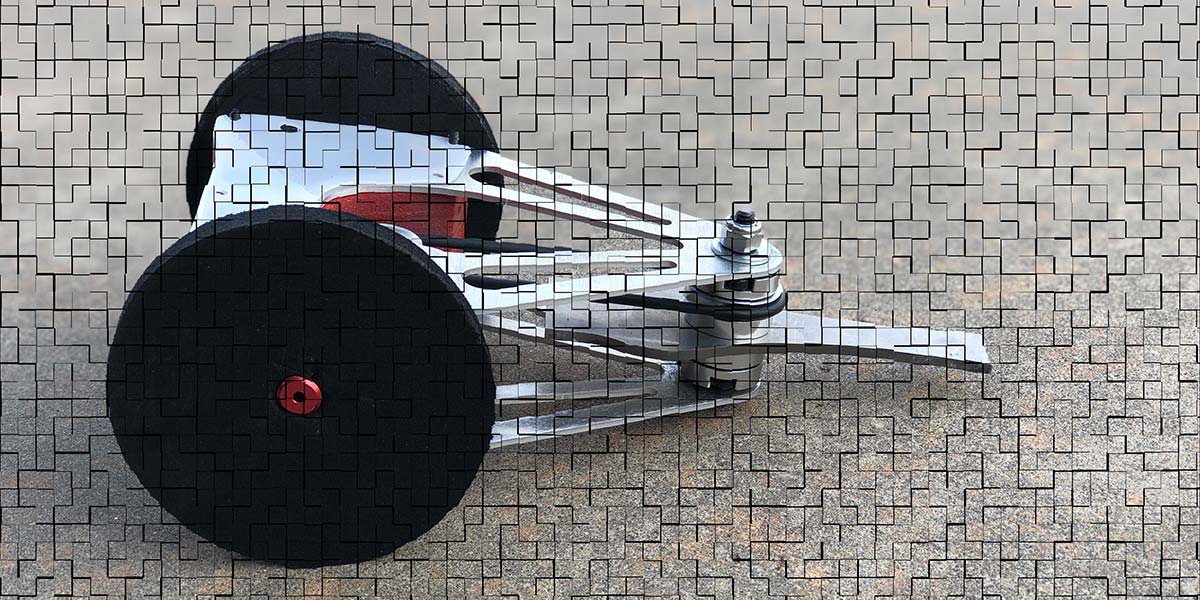
Custom Foam Wheels for Combat Robotics
By Wayne Barber View In Digital Edition
Foam wheels are very common in combat robotics — especially in the smaller Insectweight classes (up to 3 lbs). Wheels and traction are a major engineering decision in a combat robot.
Some bots rely on speed and control to maneuver or push their opponents around and favor high traction and even four-wheel drive. However, even bots with big weapons still must have mobility to get the opponent within striking range.
So, what’s with the foam?
At first glance, foam seems like a poor choice compared to something like polyurethane rubber. Rubber wheels are sturdy, offer great traction, and usually have a straightforward way of mounting to the drive axle. Foam is pliable and has comparatively less traction, so why choose foam?
Foam’s pliability and impact resistance is exactly why it’s such a great choice for wheels. Combat robots are often getting tossed and smashed across the arena. Foam wheels absorb some of that energy and reduce the amount of shock going into the drive axle.
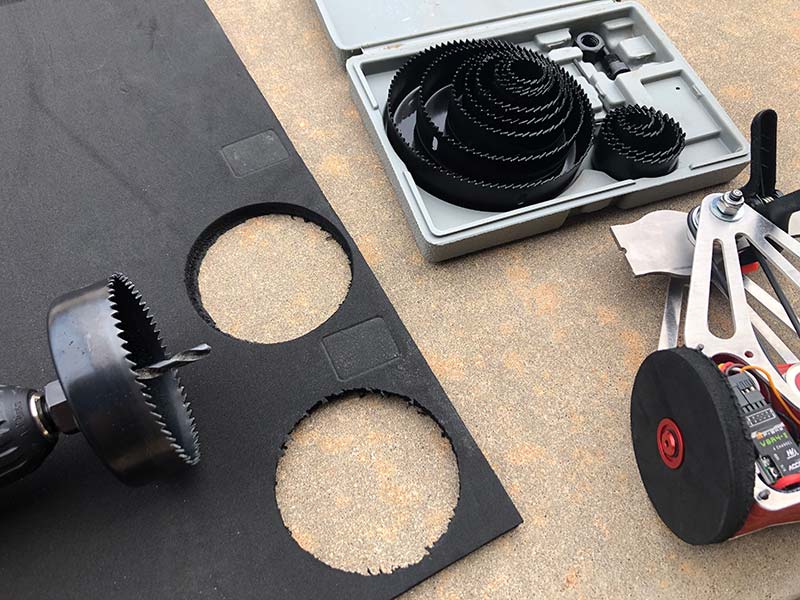
Hole saw kit contains numerous easy-to-make sizes for your bot.
In the smaller weight classes, the wheels are usually directly mounted to geared motors whose gears can’t withstand that much impact force for very long. A foam wheel will help prevent those gearboxes from failing in most circumstances, short of a direct weapon hit to the drive axle.
Foam also has decent traction and the porous nature of the material means that it will “eat” some of the dust and debris, allowing the wheel to continue to make contact in a dirty arena — which they all are!
Foam wheels come in a variety of diameters and thicknesses depending on the store, but sometimes you need the flexibility to experiment with different sizes to see how it affects your design. It turns out, foam wheels are quite easy to make! Here’s what you need:
- Foam Material
- Hole Saws
- A Drill
- Wheel Hubs
Foam material can be found online, but I bought a large sheet of EVA cosplay foam at a local Jo-Ann Fabrics craft store. I chose 10 mm thickness since this was the thickest available in the store. This happens to perfectly match my 0.5” aluminum FingerTech wheel hubs.
The FingerTech brand wheels use some type of neoprene rubber foam but I couldn’t easily source this foam or determine the correct density to buy. The EVA foam is similar in weight, slightly firmer, and slightly less grippy. These downsides are outweighed by the ability to custom fabricate any size wheel in only a few minutes.
Any hole saw will work, but I purchased an 18 pc hole saw kit from Harbor Freight; they’re known for their budget tools.
This kit comes with many sizes, from .75” up to 5” and is very cheap compared to other brands.
FingerTech Robotics is a great source for off-the-shelf wheel hubs, but the inner bore of the custom foam wheels can be drilled out to fit almost any application.
Making the Wheels
To make them, choose your desired wheel size and appropriate hole saw. Then, secure the foam sheet to some type of scrap backing surface. A firm cardboard box and some clamps work well. A piece of scrap wood also works.
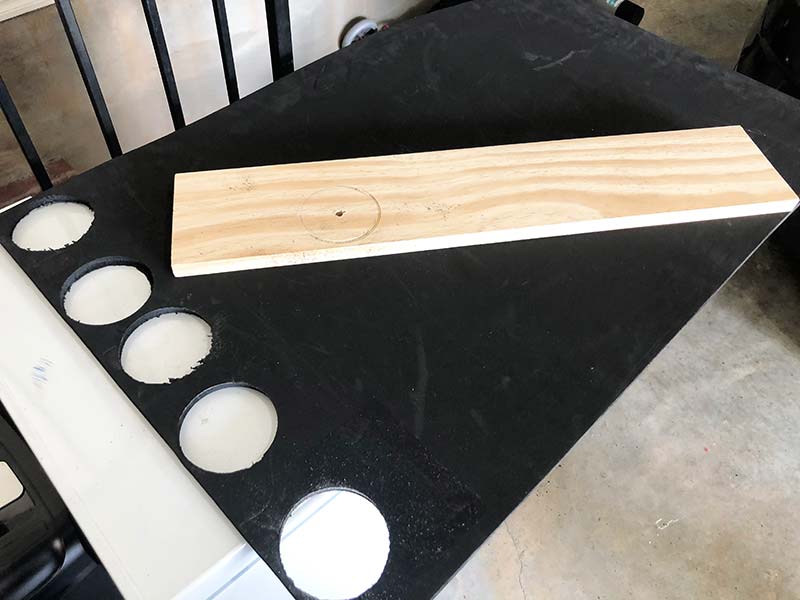
One sheet of foam can make a lot wheels.
If using wood, I recommend drilling a pilot hole in the wood that is larger than the hole saw pilot bit. This will stop the bit from wandering while drilling into the foam.
Then, use the hole saw to drill out a wheel. The hole saw tends to bite into the foam and tear at it a bit. To make cleaner wheels, spin the hole saw in reverse so the teeth of the blade scrape away at the foam instead of ripping into it.
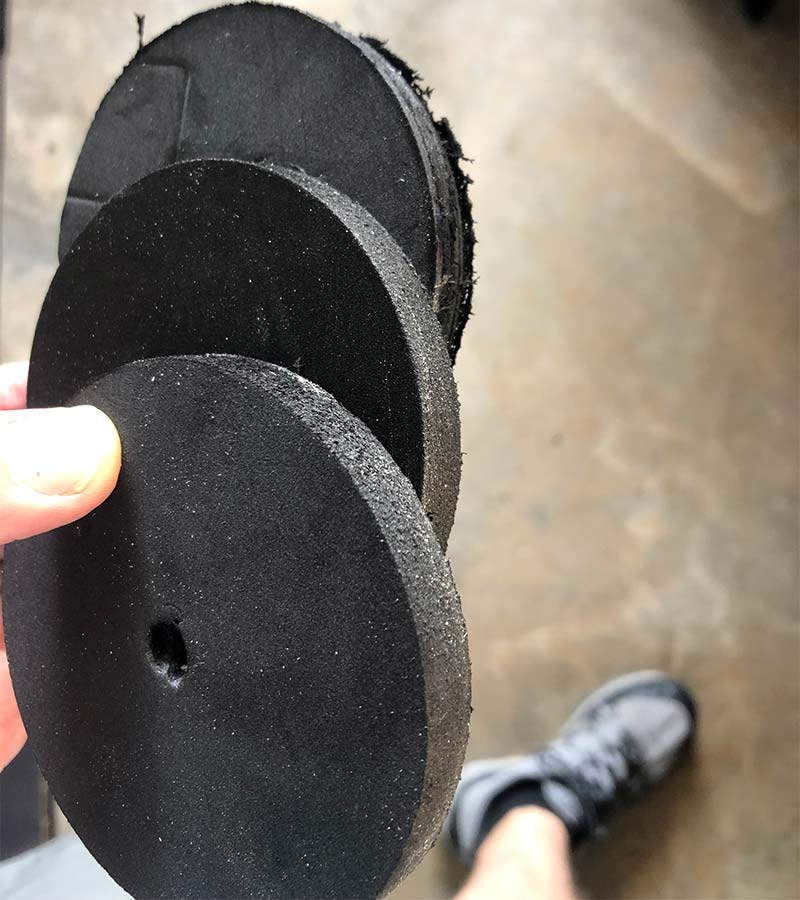
Drilling slowly and with the hole saw spinning in reverse produces better quality wheels.
Spin the hole saw at a high RPM and apply light downward pressure while drilling slowly through the foam sheet. This will yield a nice clean wheel.
You can even put two different sized hole sizes in the drill at once. The larger one will be the outer diameter of the wheel and the small hole saw will be for the inner bore of the wheel.
The newly cut wheel may or may not spin “true.” A technique I use to true them up is to mount the wheel and hub to a drive motor and spin them while using a Dremel rotary tool to cut the oblong parts of the spinning wheel. This extra step takes some time, but results in a nice smooth rolling wheel.
For extra traction, you can even coat the contact surface of the wheel in latex or silicon.
Using these techniques, I made about eight custom wheels for my robot in just a few minutes. I even brought the foam and the hole saw to a recent robot combat event and was making custom wheels for other drivers before the tournament started!
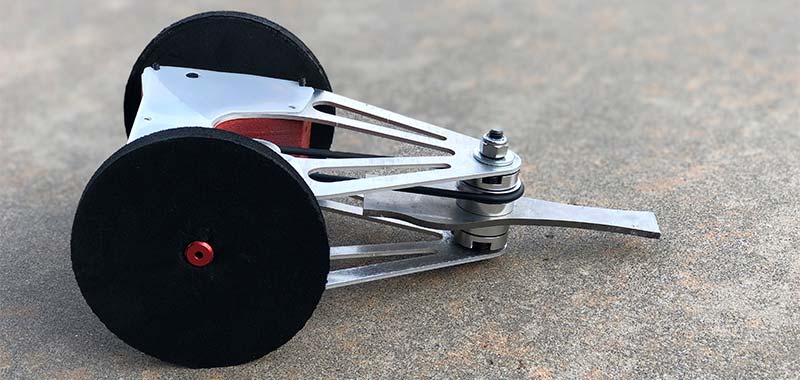
With extra large wheels, I was able to solve a design problem with my bot and also dial in my weapon blade striking height.
For my robot design, the ability to make bigger wheels prevented my robot from getting stuck on its “back” and allowed me to adjust the striking height of my weapon blade for different competitors.
Rolling On
Foam wheels aren’t going away any time soon. Their ability to absorb shock and withstand punishment in a combat robotics arena gives them a significant edge over some other wheel options. If your design needs durable energy-absorbing wheels and you need custom sizes, get yourself a hole saw and a sheet of foam and get cutting! SV
Article Comments